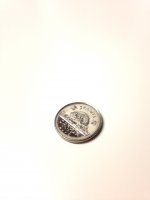JCLP
Member
- Joined
- Oct 27, 2013
- Messages
- 955
antss said:I don't spray often, well almost never. But that looks like orange peel to my eye.
Which usually means the paint hasn't been thinned enough.
But that doesn't explain why the other one goes down fine. [unsure]
Both colours are thinned by 10% with benjamin moore extender. I have tried water and I get the same results for both. I would think that the grey would be thicker as it has more colorant in it. Make sense?
JC

